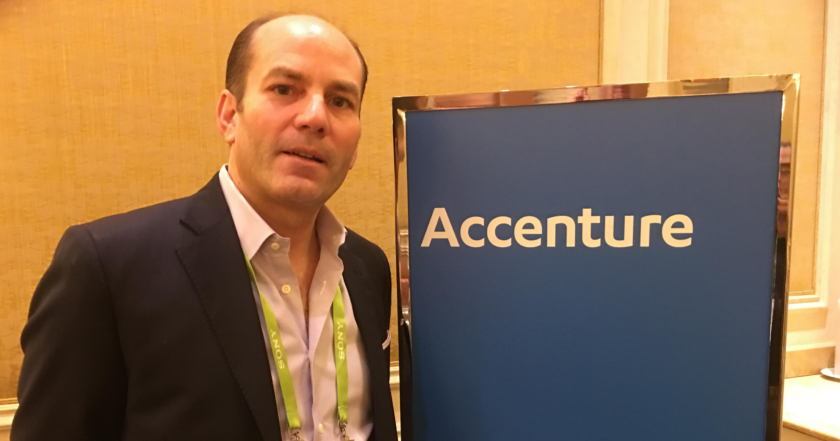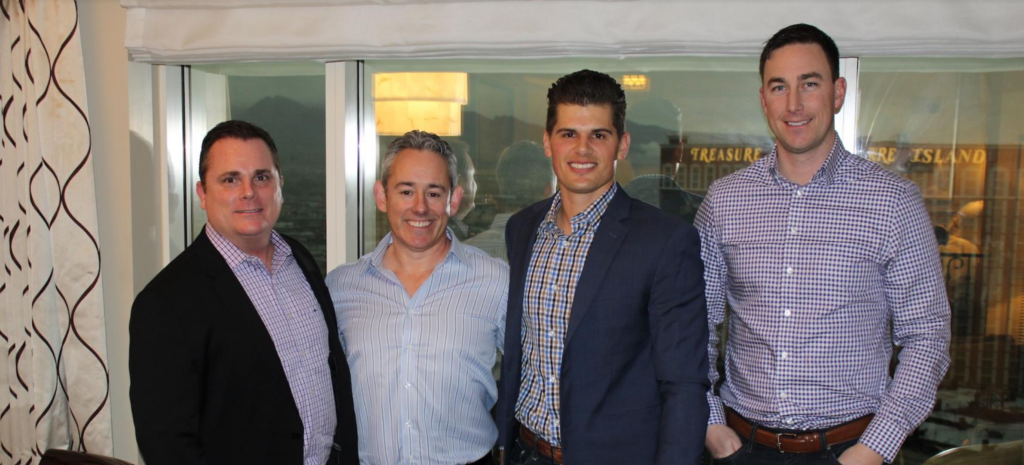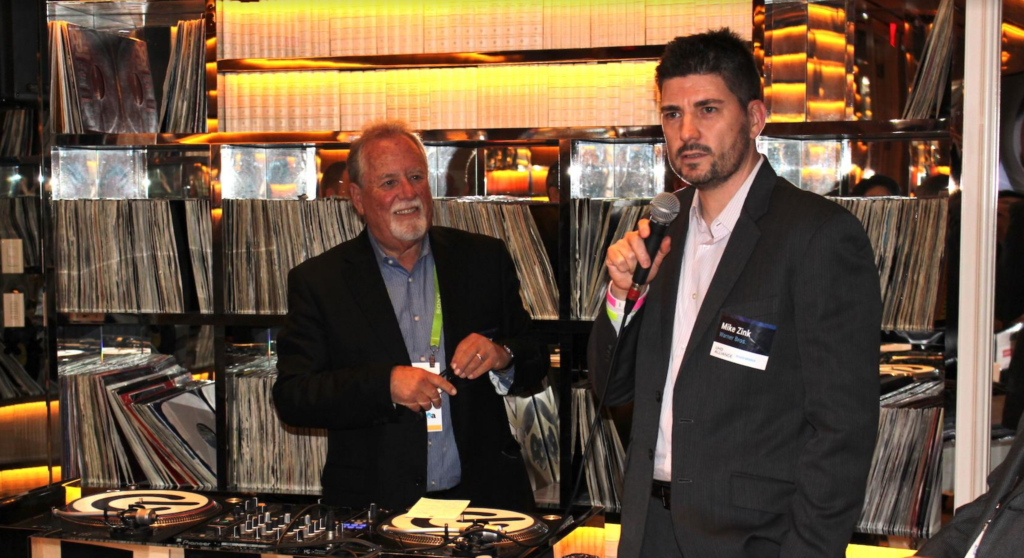HITS

CES 2018: Accenture Stresses AI, AR, VR, OTT Opportunities; Ooyala Flexes its Offerings
Story Highlights
LAS VEGAS – Accenture used the 2018 Consumer Electronics Show (CES) to stress the various opportunities media and entertainment companies have from artificial intelligence (AI), augmented reality (AR), virtual reality (VR) and over-the-top (OTT) services.
Those opportunities were underscored in its latest digital consumer survey, which pointed out just how significant AI-driven digital voice assistant (DVA) devices have become as a product category. Consumers who own in-home DVAs are already using their smartphones less often for entertainment and online purchasing, according to an online survey of 21,000 consumers in 19 countries conducted by Harris Interactive for Accenture late last year. The findings were summarized in Accenture ‘s new report, “Time to Navigate the Super Myway: Giving Consumers Exactly What They’re Looking For.”
One key finding among the data gathered from the survey was that 66% of consumers who owned a DVA said they were using their smartphones for fewer applications in the home since acquiring that DVA, Gregory Roberts, managing director of electronics & high tech at Accenture, told the Media & Entertainment Services Alliance (MESA) in an interview at the show Jan. 11.
Almost two-thirds (64%) of those owners said they used their smartphones less for entertainment now, and more than 50% used them less for online buying and general information searches (58% and 56%, respectively), according to Accenture. The survey also showed that ownership levels of DVAs are expected to more than double in 2018, reaching 39% of the online population in India, 37% in the U.S., 34% in Brazil, 33% in China, 26% in Germany, and 24% in the U.K. DVAs are also not only increasing in demand, but they’re also satisfying consumers’ wants and needs, according to Accenture, which said 63% of respondents said they were either using or interested in using a DVA, with the vast majority (94%) of current users either satisfied or very satisfied with these products.
DVAs are doing a great job of “seamlessly” blending the digital world with the consumer’s physical world, Roberts said.
In addition to DVAs, the survey also explored consumer interest in AR and VR, which the results showed extended far beyond computer and video games to a variety of more practical uses, according to Accenture. For example, 67% of respondents said they were interested in AR or VR to learn about a place they were visiting and to learn new skills or techniques, Roberts noted. AR and VR have, therefore, quickly moved from fun to “functional,” he said.
Accenture also found that interest in connected experiences extended to self-driving vehicles, and that consumers are in search of simplified, flexible and engaging subscription OTT video experiences.
It’s not the technology part of self-driving cars that’s providing an “aha” experience at CES this year, but rather the “desire and the pace of wanting to adapt that capability and what ramifications that potentially has on the industry,” Roberts told us.
Self-driving cars, for one thing, present a tremendous opportunity for advertisers, he said, noting that those vehicles stand to free up a significant amount of time for consumers who potentially will have time to do other activities during their long commutes to and from work, and will be captive listeners to potential ads during the ride, he said. While some consumers may not be overly thrilled to hear advertising in those vehicles, many may indeed be open to such ads if they’re saving money in some way for that ride, he said. Some consumers are, after all, already open to ads while watching streaming content if that content is free.
Accenture provided several recommendations to companies that it said will help them navigate the “super my way.” It suggested they “focus on blended and physical experiences,” “architect new ecosystems to connect consumers,” “innovate with new business models” and “put consumers at the heart of the OTT experience.”
On the connected vehicle front, Accenture also announced at CES that its was supporting Faurecia and Parrot Automotive to integrate AI-driven Amazon Alexa voice technology within the cockpit and entertainment system of connected vehicles. The vehicle was demonstrated by Faurecia at the show.
The system integrates two Alexa agents directly within Parrot’s latest NIS 8300 automotive entertainment system and audio beamforming technology is used to separately identify the vehicle’s driver and passenger to route voice commands to the appropriate Alexa service, Accenture said in a Jan. 10 news release.
Also at CES:
Ooyala
Jonathan Huberman, CEO of Ooyala, loves a good buzz word as much as the next person.
“AI, VR AR, you’ll see a lot of impressive demos at CES,” he said. “The demos are great, but when it comes to analyzing video and creating metadata, unless you can capture and leverage that metadata, it’s just a demo.”
Huberman and other Ooyala execs were at the trade show to tout the benefits of Ooyala Flex, the company’s media logistic solutions being employed by studios, broadcasters, brands and publishers to bring the latest advancements to their video production workflows.
 “For a lot of these technologies, with our clients, they’re just not easy to implement,” said Joey Fulcher, director of media logistics sales in the Americas for Ooyala. “Often our media business clients don’t have the resources on hand.”
“For a lot of these technologies, with our clients, they’re just not easy to implement,” said Joey Fulcher, director of media logistics sales in the Americas for Ooyala. “Often our media business clients don’t have the resources on hand.”
The key to Ooyala Flex for many of its users is its on-the-fly metadata capabilities, the ability to create clips live, but without the headaches of manual metadata entry. That AI capability, using machine learning, is proving beyond crucial for how content companies go about business today, Fulcher said.
“Everything that goes into your video is relevant, and deserves attention,” he added.
UHD Alliance
If 2017 was a solid year for the UHD Alliance, bringing its membership to nearly 50 companies and adding its Ultra HD Premium logo to everything from 4K TVs to 4K UHD Blu-ray Disc players to 4K Blu-ray Discs, 2018 promises to be even better.
 “We’re not stopping, and we realize there’s a lot more work to do,” said Warner Bros. VP of technology Michael Zink, who serves as chairman of the coalition. Mike Fidler, the first full-time president of the group, said everyone involved in the UHD Alliance is dedicated to advancing UHD, but in a new way.
“We’re not stopping, and we realize there’s a lot more work to do,” said Warner Bros. VP of technology Michael Zink, who serves as chairman of the coalition. Mike Fidler, the first full-time president of the group, said everyone involved in the UHD Alliance is dedicated to advancing UHD, but in a new way.
“We’re doing it in a way that focuses on the experience,” he said. ”We can go into nits and wide color gamut, but that’s not consumer friendly at all. We don’t want to put any doubts in consumers’ minds.”
Soon, the Alliance will debut a new video campaign centered around the benefits of UHD-certified products, covering everything from HDR to immersive audio technologies.
Chris Tribbey contributed to this report.









